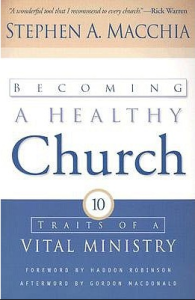[This is the eighteenth article in the series of God Moments in My Publishing Life.]
If you asked most any pastor or ministry leader in 1996 about the state of Christianity in New England he or she would parrot a popular perception—the church is dead in New England. When I took over communication and marketing for the Evangelistic Association of New England I knew that was not true, for I had attended the annual gathering of evangelicals in recent years and seen a vibrant community of faith. Over the next five and a half years I had ample opportunity to disprove it in one God Moment after another.
It did not take long for me to recognize the vibrancy and commitment of men and women leading the dozen ministries serving Christ and the church under the umbrella of EANE. Each had to do their own fundraising, but EANE provided a variety of resources to aid them, not the least of them being the mailroom and its computers and photocopiers. As editor for a monthly newsletter going to Christians and churches I saw my job as helping them keep their ministry alive in church leadership circles and budgets. The bi-monthly newsletter to pastors kept them informed on events designed to bring them together and enriched by nationally known speakers.
Two major events required maximum promotion:
- The annual Christian education conference that was held in different regions with a church facility large enough for several hundred Sunday school teachers and leaders, youth ministry leaders, and women’s ministry leaders.
- The annual Congress, which brought to together eight thousand or more Christians from five states in the Hynes Convention Center in Boston eager for refreshment and learning new ministry approaches. Evangelism remained a major focus, with scores coming to a personal faith in Christ during the keynote addresses and workshops—and Christians who had never shared their faith introduced to effective personal witnessing.
About six months after we arrived Rita and I experienced a God Moment when we attended the dedication service for the Walnut Hill Community Church’s first church building. Organized in our home 15 years earlier, the church had met in school facilities all these years while fighting to erect a sanctuary on property purchased in a community several miles from Danbury. After ten years of litigation their case landed in Connecticut’s Supreme Court, which in a God Moment ruled the town had to let them build a church. With a warm-hearted pastor and active members the church started growing exponentially and today the main site has about 2500 in its services, with five church plants.
Healthy Church Growth Principles Are Born
The Rev. Stephen Macchia, president of the Evangelistic Association, had developed ten principles of a healthy church before I arrived. A team of pastors had interviewed more than a hundred pastors for feedback. My first assignment was to interview pastors all over New England whose church demonstrated one or more of the principles of a healthy church. I was stunned by what I found, discovering growing churches all over New England, often led by can-do pastors from other parts of the United States.
Surprisingly, many of the churches had grown from a hundred or so congregants to 300, 400, even 750 and 900 in worship services. A church in Maine attracted 500 on Sundays when the town had fewer residents than that. A charismatic African American pastor in Boston saw his evangelistically focused church grow to 5,000, with 2,000 in the youth congregation. Another African American pastor in a Hartford, CT suburb had started a church in his home in the 1960s and was building a sanctuary for 7,000 attendees. In a Burlington, Vermont, community one evangelical church had 750 and another five miles away had 900 at services. We also discovered that pastors that stayed with a church 20 years or more typically led a growing church—and honored them at a late 1990s Congress of evangelicals. I told their stories in the newsletters to pastors.
At Congress 1998, EANE set up 15 computers and invited attendees to spend 15 minutes ranking the Rev. Stephen Macchia’s 10 principles of a growing church on their perceived significance in the growth of a healthy church. With no incentive other than helping in research, 1500 New England believers lined up for their turn to record their rankings. There were numerous surprises, with by far the majority ranking as No. 1 experiencing the presence of God in the services, probably reflecting that Pentecostal and Charismatic churches were frequently the fastest growing. Evangelism and stewardship were down the list from the one on a caring community.
A Book Is Born
 Now that I had recorded and told the stories of churches reflecting the 10 principles of a healthy church—and we had the research data from the 1500 evangelicals ranking the significance of the principles—we knew it was time for a book. The Rev. Macchia and I storyboarded the sequence of chapters on a chalkboard. He spent the summer writing the book, inserting the already published stories of healthy churches as evidence of where God gave the increase when principles of church health were prayerfully implemented.
Now that I had recorded and told the stories of churches reflecting the 10 principles of a healthy church—and we had the research data from the 1500 evangelicals ranking the significance of the principles—we knew it was time for a book. The Rev. Macchia and I storyboarded the sequence of chapters on a chalkboard. He spent the summer writing the book, inserting the already published stories of healthy churches as evidence of where God gave the increase when principles of church health were prayerfully implemented.
As a part-time literary agent I developed a proposal with sample chapters and circulated these to publishers, realizing editors would be skeptical a ministry leader in New England would have the marketing clout needed. An editor at a major publisher expressed interest, but insisted we needed stories gleaned nationally of churches illustrating the ten principles. I told the Rev. Macchia that if a Canadian pastor using only Canadian stories illustrating what it meant to have a vibrant Christian experience could write a bestseller, a book on Becoming a Healthy Church featuring only story illustrations from New England ought to sell. Shortly thereafter a Baker Book editor contacted us and expressed interest. We flew to Grand Rapids to meet with the editors and key marketing people and Baker released the book in 1999. That year Becoming a Healthy Church sold more than 30,000 copies, more than any Baker non-fiction book released that year. By 2004 it had gone through three printings and it is still available.
A Bright Idea
One day while employed at what became Vision New England I received a call from Dr. Bill Bright of Campus Crusade for Christ that became another God Moment. Would I be interested in doing the research and first draft of a book on the attributes of God? He had a message he occasionally gave on the topic and was vitally interested in seeing it expanded into a book. My research led me to the library at nearby Gordon-Conwell Theological Seminary for several days of research over Thanksgiving. I added book purchases from the used book section of Kregel’s bookstore in Grand Rapids, and books on theology from other sources. We followed it up with a meeting with Dr. Bright, his wife Vonette, and several staff, pumping Dr. Bright for stories illustrating the attributes of God as he experienced them. After he personalized the content and an editor inserted the stories, the book became simply God.
Then a publisher approached me about a book for a well-known evangelist that had a deadline of two months. This time I could take time off over Christmas and the New Year to do the research and write the book. Completing those two books represented an immersion in Christian doctrine and the Bible’s teaching possible only because I had completed four years of Bible college studies years earlier. I had also been involved in many theological discussions leading the Textbook Committee at Moody Press in the 1970s. As I lead workshops at Christian writers conferences on “Integrating Life Experience with Scripture” in their writing I consistently recommend extended personal biblical and theological studies if a writer is to represent biblical truth accurately.
A Pending God Moment
Many readers will remember what was called the dot-com bust in the years 2000 and 2001. The stock market meltdown dramatically reduced the income of many charities, including those supporting Vision New England. Everywhere ministries had to cut back—and so did Vision New England. Leadership decided a communications and marketing vice president was expendable, so I was given notice that my services were no longer needed. The resulting God Moment, however, generated a dramatic new opportunity for me as a writer and teacher of writers that I will disclose in the next installment of “God Moments in My Publishing Life.”
Copyright, 2015, Les Stobbe



